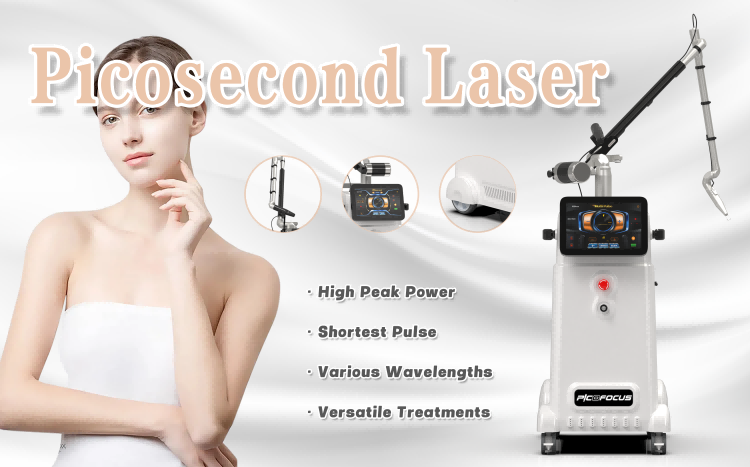1. Why Can’t Lasers Cure All Skin Problems?
In the pursuit of smooth and flawless skin, laser technology is undoubtedly a powerful beauty tool that can accurately remove spots, smooth wrinkles, and improve skin quality. Its efficiency and convenience have attracted countless beauty enthusiasts. However, just as sharp blades also need to be used with caution, lasers are not suitable for everyone and all skin conditions. Blindly following the trend may lead to disfigurement instead of beauty. Today, we will delve into which types of skin and groups of people need to press the “pause button” for laser projects to help you make the safest and wisest choices on the road to beauty.
2. Absolute Taboos: These Types of Skin Should Be Completely Avoided From Lasers
2.1 Skin Inflammation and Infection in the Active Phase
Including but not limited to: extensive redness, swelling, and suppuration of acne. Acute onset of facial eczema and dermatitis. Herpes simplex (with burning around the corners of the mouth and nose). The active period of viral skin diseases such as flat warts and common warts. Laser is a controllable minor injury that temporarily reduces skin barrier function. Treating during the active phase of inflammation is like adding fuel to the fire, which can easily lead to the spread and aggravation of inflammation, and even trigger more serious infections. May lead to more severe outbreaks of acne, expansion of eczema, widespread spread of herpes virus (forming acne like rashes), leaving behind difficult to fade pigmentation or scars.
2.2 Uncontrolled Scar Constitution, Beauty Is Not Achieved, Leaving Scars Instead
Clarify the definition of scar constitution (such as the formation of raised scar lumps from previous minor injuries). Laser itself is a traumatic repair process. For individuals with true scar constitution, laser energy may become a new stimulus source, inducing excessive proliferation of fibroblasts, leading to the formation of new and larger scar lumps in the treatment area. The old scar has not been removed, but the new scar has returned. The treatment results are contrary to expectations, and the difficulty and cost of repair have increased sharply.
2.3 Skin That Has Recently Been Exposed to Sunlight or Has Obvious Sun Damage

Refers to prolonged and unprotected exposure to sunlight within 2-4 weeks prior to treatment, resulting in redness, darkening, or even peeling of the skin. Ultraviolet radiation stimulates melanocytes to be in a highly active state. At this time, laser treatment (especially for spot removal and skin rejuvenation) can greatly stimulate melanocytes, leading to severe pigmentation (i.e. skin darkening) that is difficult to fade away. Sun exposure itself has damaged the skin barrier, combined with laser damage, resulting in slow recovery and high risk. Color spots may become darker and more frequent, exacerbating the problem of uneven skin tone.
2.4 The Skin Is In A Period of “Sensitive Rebellion”
Whether it is congenital sensitive skin or skin barrier damage caused by excessive cleaning and misuse of skincare products, it is manifested as redness, itching, and stinging. The skin barrier function of sensitive muscles is impaired, and there is high reactivity of nerves and blood vessels. The thermal effects and minimally invasive injuries of lasers can far exceed their tolerance, easily causing persistent redness, edema, burning and stinging sensations, and even further increasing sensitivity, transforming into more difficult to treat conditions such as hormone face. Beauty projects become disfigurement projects, and the skin condition does not improve but regresses, requiring a long time for repair.
2.5 Special Period of Pregnancy and Lactation
Clearly identify pregnant and lactating women. At this stage, women’s bodies and endocrine system are in a special period. Although the local effects of laser are currently inconclusive, for ethical considerations of absolute safety, all non emergency medical beauty projects should be avoided. Hormonal changes during pregnancy may lead to new problems such as melasma, and the timing of treatment is not ideal, making it difficult to predict the effect. Although there is no direct evidence, in order to avoid any potential risks, the safety of mother and child must be prioritized.
2.6 Currently Taking Photosensitive Drugs and Medication for Some Diseases
Such as tetracycline antibiotics, retinoids (oral isotretinoin), some contraceptives, sulfonamides, diuretics, etc. These drugs increase the sensitivity of the skin to light. Laser treatment during medication can amplify the photothermal effect of the laser, greatly increasing the risk of burns, blisters, and persistent discoloration. Patients taking oral isotretinoin need to discontinue the medication for at least 3-6 months before considering laser treatment, otherwise the risk of scar formation is extremely high.
2.7 Coagulation Dysfunction or Currently Taking Anticoagulant Drugs
Suffering from coagulation disorders such as hemophilia, or long-term use of medications such as aspirin and warfarin. Partial lasers, such as dot matrix lasers and ablative lasers, can cause minor skin damage and bleeding. Abnormal coagulation function can lead to prolonged bleeding time, severe bruising, affect wound healing, and increase the risk of infection. The postoperative recovery period is long and accompanied by severe purpura and bruising.
2.8 Unrealistic Expectations or Individuals with Psychological Disorders
Expect to solve all problems through a single treatment, pursue zero blemishes and perfect skin, or have psychological issues such as physical deformation disorders. Laser is a means of improvement, not magic. Any treatment has its limits and recovery period. Unrealistic expectations inevitably lead to dissatisfaction with the results, thereby triggering medical disputes. Starting from the compassion of doctors, these seekers of beauty are not the best fit for the population. Even if the treatment itself is successful, it cannot meet their psychological expectations and is a consumption for both parties.






